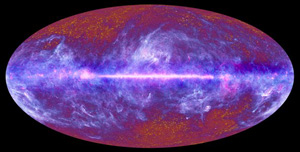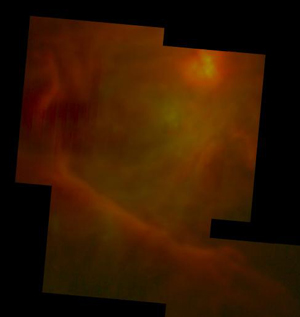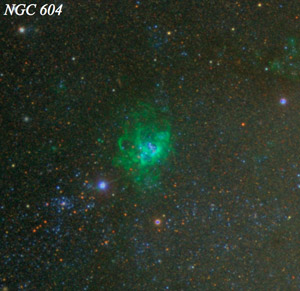This week is the semi-annual meeting of the American Astronomical Society, the largest society of professional astronomers in the US. The January meeting is always huge, and always has a lot of news flooding from it like the collimated jet from a supermassive black hole. The big news stories I’ve written about the past couple of days have come from there, and I’ve been scrambling to keep up. But that’s proving to be difficult, so instead of my usual Pulitzer-level reporting of astronomy news, here are some links to stories that will probably interest you. And if you’re on Twitter you should be following the awesomeness that is Pamela Gay, aka StarStryder, as she writes live from the floor of the meeting (and blogs about it, too).
 A very cool announcement from the orbiting gamma-ray observatory Fermi: thunderstorms on earth generate this high-energy form of light by creating antimatter. Yes, antimatter. This idea has been around for a while – I remember thinking about it years ago when I worked on the education and outreach for Fermi – but the scientists finally nailed down the specifics, and it’s pretty amazing. Not enough there to power a starship (and it might be hard to bottle it anyway), but still. Wow.
A very cool announcement from the orbiting gamma-ray observatory Fermi: thunderstorms on earth generate this high-energy form of light by creating antimatter. Yes, antimatter. This idea has been around for a while – I remember thinking about it years ago when I worked on the education and outreach for Fermi – but the scientists finally nailed down the specifics, and it’s pretty amazing. Not enough there to power a starship (and it might be hard to bottle it anyway), but still. Wow.
 The Planck satellite is designed to look at the background radiation of the Universe in unprecedented detail. While it may not see any signatures by The Ancients (man, I’m ticked Stargate:Universe was canceled) it just released a whole lot of science, and Sean Carroll at Cosmic Variance has links to some of the science and scientific papers.
The Planck satellite is designed to look at the background radiation of the Universe in unprecedented detail. While it may not see any signatures by The Ancients (man, I’m ticked Stargate:Universe was canceled) it just released a whole lot of science, and Sean Carroll at Cosmic Variance has links to some of the science and scientific papers.
 SOFIA is a mid-infrared telescope that flies – seriously – on an airplane with a hole cut out of the side. Astronomers just released a way cool image of the Orion Nebula, comparing it to previous images. It’s a lovely shot showing new-born stars, and accentuates a ginormous shock front of gas in the nebula that I’ve seen probably 5000 times in my life, but never like this; you get a real feel for the three-dimensional nature of the cavity being eaten away in the gas as the hot star blast it with stellar winds and ultraviolet radiation.
SOFIA is a mid-infrared telescope that flies – seriously – on an airplane with a hole cut out of the side. Astronomers just released a way cool image of the Orion Nebula, comparing it to previous images. It’s a lovely shot showing new-born stars, and accentuates a ginormous shock front of gas in the nebula that I’ve seen probably 5000 times in my life, but never like this; you get a real feel for the three-dimensional nature of the cavity being eaten away in the gas as the hot star blast it with stellar winds and ultraviolet radiation.
I have some background info about SOFIA from last May, when it first started producing scientific data, It’s an amazing machine.
 A new survey of the sky has just been released, and it is essentially the largest color picture of the sky ever taken: over a trillion pixels of information! That’s a million megapixels, or a terapixel, if you’re keeping track at home. The data comprise the third generation Sloan Digital Sky Survey (SDSS), and the part you see here is a teeny tiny fraction of what’s available, showing NGC 604, a star-forming region I coincidentally wrote about recently. You can read more about the SDSS data at the Lawrence Berkeley National Lab website, and Discover Magazine’s 80 Beats blog.
A new survey of the sky has just been released, and it is essentially the largest color picture of the sky ever taken: over a trillion pixels of information! That’s a million megapixels, or a terapixel, if you’re keeping track at home. The data comprise the third generation Sloan Digital Sky Survey (SDSS), and the part you see here is a teeny tiny fraction of what’s available, showing NGC 604, a star-forming region I coincidentally wrote about recently. You can read more about the SDSS data at the Lawrence Berkeley National Lab website, and Discover Magazine’s 80 Beats blog.